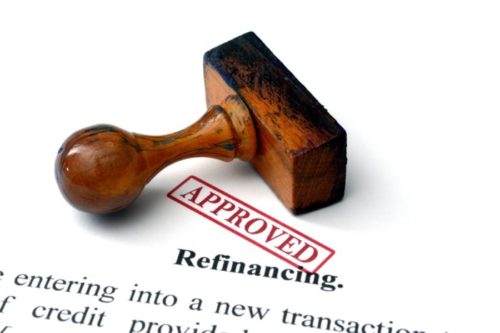When you purchase a home, you usually take out the mortgage expecting that you’ll pay the same amount every month for the next 30 years. A lot can happen over three decades, though, and there may come a time when it’s more financially advantageous for you to replace the original loan with a new loan that has more favorable terms.
Many people take out new loans to take advantage of lower interest rates and reduce their monthly payments while still paying less over the life of the loan. This approach is called mortgage refinancing. Refinancing can also provide a way to consolidate and reduce debt to other creditors, reduce the terms of the mortgage, or eliminate the need to carry private mortgage insurance (PMI).
If you have good credit, refinancing can be easy. If your credit is fair or poor, though, it can be challenging.
Table of Contents
Can You Refinance With Bad Credit?
When you have bad credit — meaning a credit score of less than 620, a spotty payment history, large balances on your credit cards, or other problems — it is possible to refinance your mortgage. That said, you will likely need to jump through some hoops or try multiple avenues to locate a lender willing to work with you.
Before applying, do your homework to determine which options may be best for your situation. Each lender has its own requirements in terms of credit score requirements, how much you can borrow, and the refinancing process. Only apply with those lenders who will work with you to save time and frustration.
Refinancing With Bad Credit Options
If you want to refinance and have bad credit, you have several options. Keep in mind that no matter which you choose, you’re likely to pay more than someone who has good credit. For starters, you’re unlikely to qualify for the lowest available interest rate, and may pay as much as a full percentage point (or more) on your mortgage. This translates into a higher monthly payment and more interest over the life of the loan.
That said, if your new interest rate will be lower than what you’re currently paying, or refinancing is the best way to get you out of financial trouble, then you’ll still come out ahead.
The first step to successfully refinancing — regardless of your credit score — is to work with your current lender. Relationships are important to banks, and they want to keep your business. It’s best if you have a specific contact at the bank, someone you can talk with to explain your situation and come up with the best solution. If you’ve made all of your current mortgage payments on time, for instance, your current lender may be willing to give you the benefit of the doubt and approve your refinance application.
If refinancing through your current lender isn’t possible, you have other options.
Get a Cosigner
If a friend or family member has excellent credit and is willing to take responsibility for your loan if and when you default, this could be your ticket to refinancing. You’ll have to convince a co-signer that you have the means to repay the loan and will be responsible in doing so.
From a bank’s perspective, a co-signer reduces their risk. However, these agreements create new risks for you and your co-signer. The agreement should be treated as a business deal, with written agreements detailing the terms of the arrangement and what happens to the property in certain situations, such as divorce or death.
FHA Streamline Refinance
If you have an existing FHA loan, the FHA streamline refinance program may be your best bet for refinancing with bad credit. As long as your mortgage is current, you’ve made the last six months of payments on time, and you can show a tangible benefit from refinancing (such as at least a 5% reduction in your monthly housing payment), you are likely to be approved for one of these loans.
The FHA streamline refinance program allows you to take advantage of the most current refinance interest rate, without a lot of paperwork, including income verification, credit checks, or appraisals. On the downside, you will need to pay loan costs separately (they can’t be rolled into the loan) and you may need to make an upfront annual payment for PMI.
FHA Rate and Term Refinance
FHA refinance programs aren’t only for those who already have an FHA loan. If you have a mortgage with a high interest rate, and a credit score between 580 and 620, the FHA Rate and Term refinance option allows you to change the terms of your loan. This program does require income verification and an appraisal, and allows you to borrow up to 97.75% of your home’s appraised value. You’ll be required to pay monthly PMI, but the closing costs can be rolled into the loan, reducing your upfront payment.
FHA Cash-Out Refinance
A Cash-Out refinance allows you to borrow more than you owe on your home. You can repay the first mortgage, and use any additional proceeds to consolidate debt or pay off other bills. The actual amount you can borrow varies by where you live, and you may increase your monthly mortgage payments, but if you’re trying to get your financial house in order, this can be a viable option to reduce your overall burdens. Like other FHA programs, you will need to pay monthly PMI on these loans.
VA Refinance
If you have an existing VA loan, you may be able to refinance through the interest rate reduction refinance loan (IRRRL). Similar to the FHA streamline refinance program, the IRRRL allows you to refinance your home without a credit check or appraisal, provided there is a demonstrated tangible benefit from refinance.
This program allows you to borrow up to 100% of the value of your home, and in some cases, you may not have to pay funding fees. VA loans also do not require mortgage insurance.
Portfolio Refinance Loan
Portfolio loans are held by the bank or mortgage company itself, and not sold on the secondary market. This means that lenders can set their own qualifications for lending, and they may be willing to work with you even if you have bad credit.
These refinancing loans will likely require a credit check, income verification, and an appraisal. Try working with a mortgage broker or large mortgage company, who can match you with portfolio lenders who will be willing to look past your credit score or take a risk.
Shop Around
If none of these options work for you, consider shopping for a refinance loan through an alternative or non-prime lender. A mortgage broker may be able to help you identify options.
Because alternative lenders tend to focus on those with bad credit, or those who have had significant issues like bankruptcies and foreclosures, you have a good chance of being approved, but will undoubtedly pay more. Interest rates are higher than with traditional lenders, and many of these loans come with steep closing costs.
Improve Your Credit
If your credit situation is keeping you from refinancing, or the terms you’re offered aren’t going to benefit your finances, wait to refinance and work on improving your credit. With some discipline, you can increase your score significantly in a short period, improving your chances of being approved for a refinance loan. Some of the things you can do include:
- Check your credit report: If your report contains errors, it could be driving your score down. Review your file and correct any mistakes as soon as you spot them.
- Pay your bills on time: Your payment history is a significant factor in your credit score, so pay your bills on time every month.
- Reduce your balances: Your debt-to-income ratio and credit utilization also influence whether you can get a new mortgage. Focus on paying down your balances as much as possible. If necessary, sell unwanted items or take up a side hustle and put the proceeds toward your debt. The faster you can pay things off, the faster your score will increase and the more attractive you’ll be to lenders.
- Don’t close unused accounts: Resist the temptation to close credit card accounts you aren’t using. Your limits count toward your available credit, and leaving accounts with a zero balance reduces your utilization and increases your score.
- Request credit limit increases: Another way to decrease your credit utilization percentage is to request credit limit increases on your cards.
- Avoid applying for new credit: Hard inquiries can take points off your score. Avoid applying for new credit while you’re working on improving your score.
Image Source: https://depositphotos.com/





